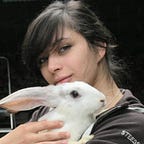The neuro-theory behind a selling photo
Neurosciences are often over-used in marketing, and it’s easy to jump into mistaken practices, such as foretelling witch site of the brain is responsible for either creative or rational thinking. But, there are some visual suggestions, that have shown in research to be the most eye-catching for the viewers — concentrating attention on a picture might not lead directly to making somebody buy the product (as there are some more processes going on in the brain, while making a purchase), though they might suggest overthinking the decision. So what is the key to concentrate attention on a picture or a visual?
Vilayanur S. Ramachandran and William Hirstein have developed a theory of eight laws, that sum up the aesthetic experience. They are the factors, that make us pay attention to a picture, consider something beautiful, attractive or appealing. The research was driven from the wonder, why and how we see objects as “a piece of art”, but we can use the conclusions to grasp the idea on what seems alluring to our sense of sight.
- Excessive suggestion & solitude
We tend to concentrate on images, that capture the essence of things, extend the most characteristic features of objects, enhanced to the maximum. Amplification of distinctive qualities of things makes us remember objects, that we already know and causes reduction of redundant material. We capture the “essence” of things instantly — and what’s more, especially if it’s isolated. Our attention does not run around the image deconcentrated, but has a direct message delivered before our eyes. Even an outline drawing can be more appealing than a confusing photograph — the visual should be clear, extended and isolated.
- Mystery behind the image
We have evolutionary taught ourselves to isolate images from a broad perspective — whether it was our predator hidden in the bush or fruits, covered with leaves. This is a completely different mechanism, that is activated, when we have time to think about the image — an outdoor ad while waiting for the bus might be attractive here, but a scrolled Facebook image might not activate the same impulses. Perceptual grouping is responsible for uncovering objects, and causes a direct pleasure, once the item is discovered. Remember “Where’s Wally?” This is the similar mechanism of reward, that activates itself, once the mystery is discovered. Discovering an object after a struggle is more pleasing, than just catching the obvious, but takes a lot more attention and time. Everything that grasps our imagination and is a problem solving case, is a joyful activity for our brain.
- Contrast & symmetry
Our sense of sight is targeted to see some things better than others. Our cells react differently than snakes (for example) visual cells, and we are oriented to see better images, that have a clear contrast and are symmetrical. The orientation and presence might also play a role, since we have two different types of cells in the eye, responsible for color, light, contrast, recognizing objects. Also, symmetry is appealing to us, in a way, that instantly catches the eye. We have learned, that symmetrical faces are a sign of good mate, or family partner, and we hold a deeper connection with objects, that are symmetrical.
